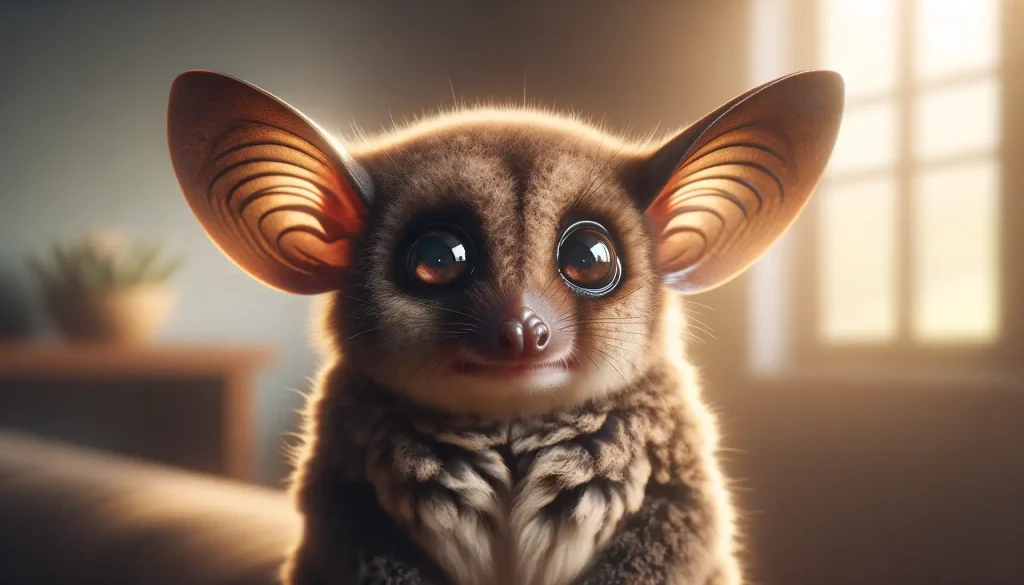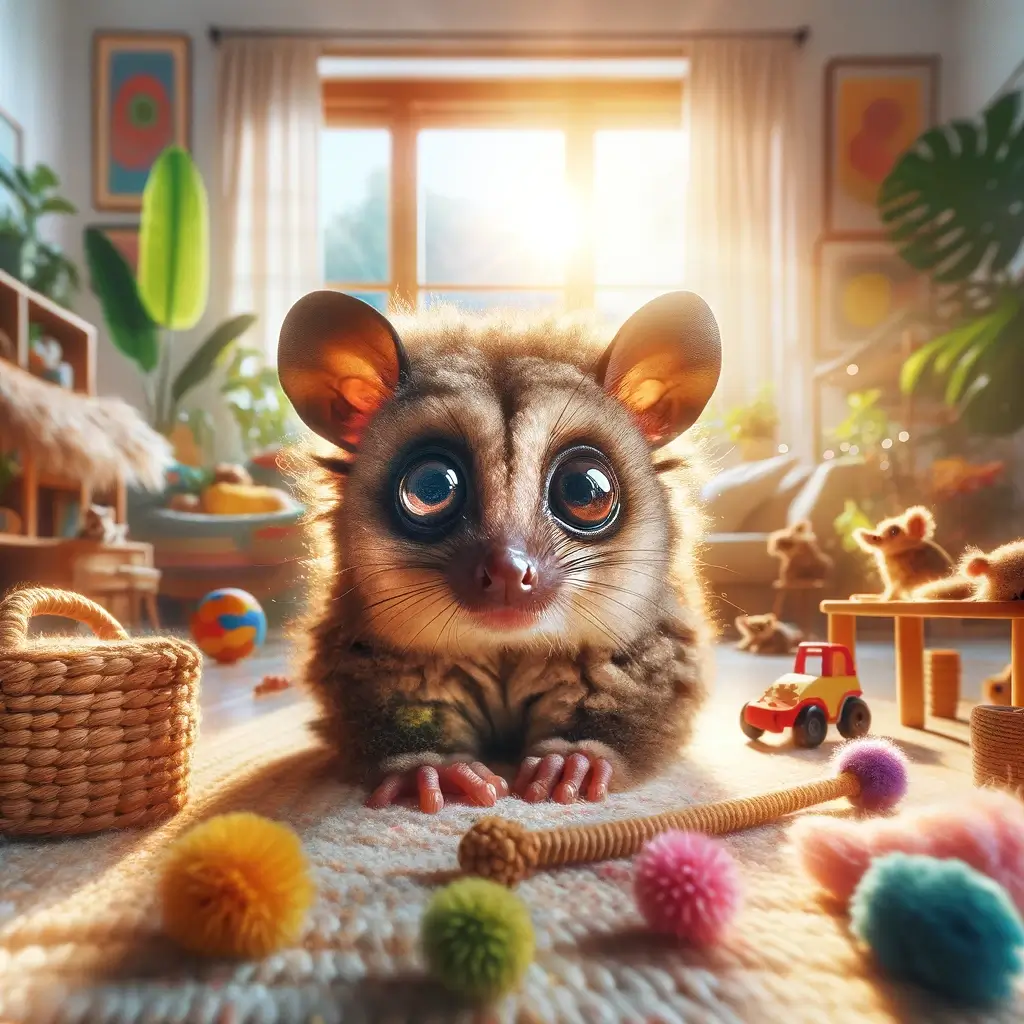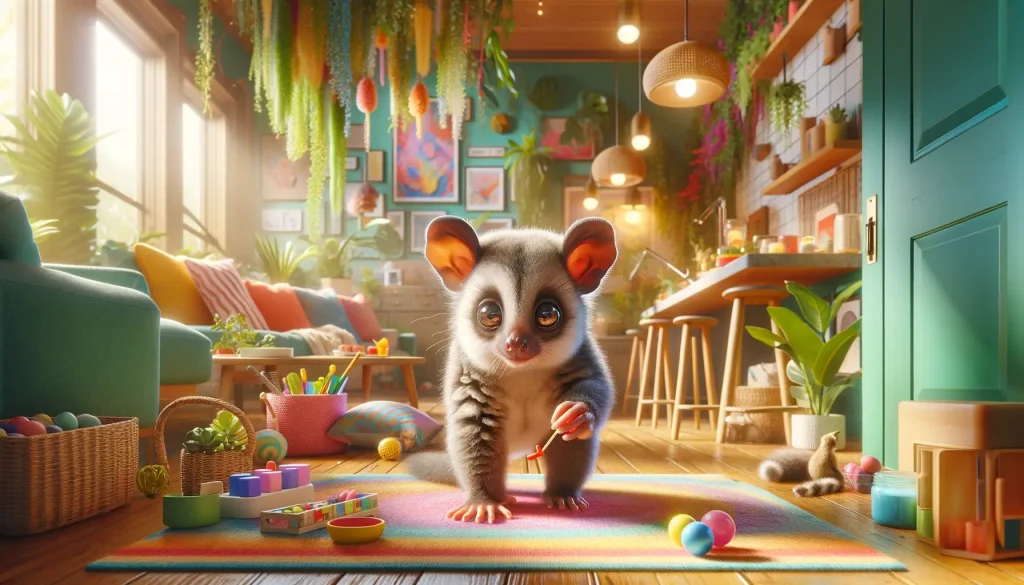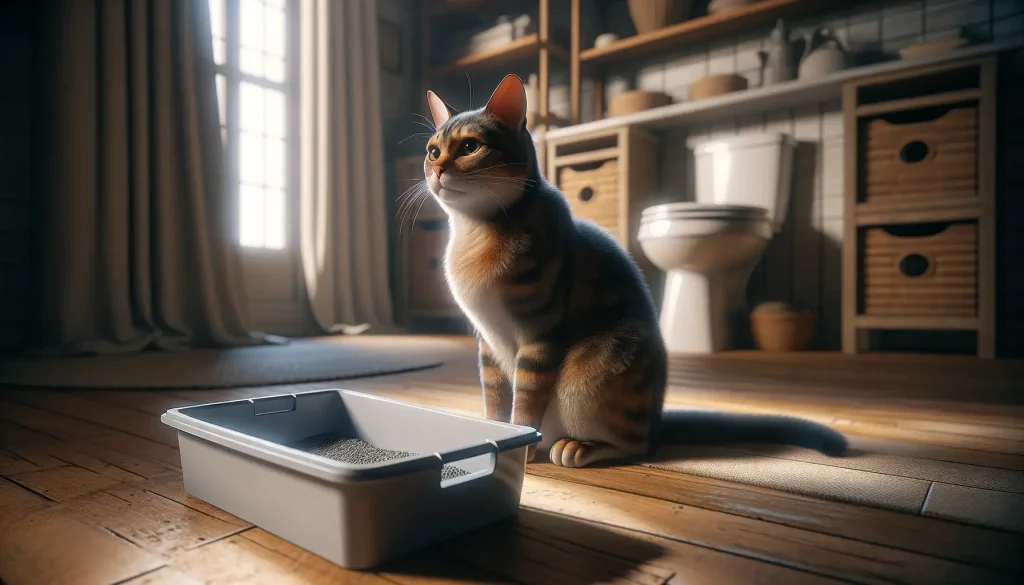
Bushbaby Pet Care
Interested in exotic pets? Bushbabies, or tiny nocturnal monkeys, have sparked curiosity as unconventional companions. Known for their large eyes, strong leaps, and acute hearing, these creatures bring the wild into the home. In places like Marloth Park, residents create bushbaby houses to attract them, though full domestication poses challenges. Bushbabies communicate with calls and scent markings, forming complex social bonds, primarily maternal. While their ability to jump long distances and nest in thatch roofs might seem charming, bushbabies have intricate dietary and social needs, highlighting the complexities of their care in captivity. Despite these fascinating attributes, the nocturnal nature, potential for disease transmission, and legal or conservation concerns render them a controversial choice for a pet. For those contemplating bushbaby pet ownership, it’s crucial to weigh these factors carefully.
Bushbaby Pet FAQs
Considering a bushbaby as a pet? Here’s a concise FAQ to address common questions about their care, behavior, and the challenges they present as pets.
- What do bushbabies eat?
Bushbabies require a varied diet of insects, small animals, fruits, and tree gums. Feeding them requires knowledge of their nutritional needs to ensure their health.
- Can bushbabies be domesticated easily?
No, bushbabies are wild animals with complex social and environmental needs. Attempts to domesticate them can be challenging and are not recommended due to potential stress and legal concerns.
- Are bushbabies nocturnal?
Yes, bushbabies are nocturnal, making them active primarily during the night. This can pose a challenge for owners who are active during the day.
- How do bushbabies communicate?
They communicate through a variety of vocalizations and scent marking with urine to navigate and identify group members. Understanding these behaviors is crucial for anyone considering a bushbaby as a pet.
- What are the legal considerations of owning a bushbaby?
Ownership laws vary by location. It’s essential to research and understand the legal ramifications, including conservation and welfare concerns, before considering a bushbaby as a pet.
- How long do bushbabies live in captivity?
With proper care, bushbabies can live over a decade in captivity. Potential owners must be prepared for a long-term commitment.
Bushbaby Behavior and Social Structures
Bushbabies, known for their distinctive features such as bat-like ears and large eyes, are admirable for their nocturnal vision and remarkable agility. Their strong hind limbs allow them to make extraordinary leaps, a natural behavior that fascinates many. These tiny nocturnal monkeys utilize their acute hearing and flexibility to navigate through the night, showcasing their uniquely adapted lifestyle.
In certain regions, individuals attempt to bridge the gap between wild and domestic life by setting up bushbaby houses, drawing them closer to human habitation. Although intriguing, creating such attractions without disturbing their natural behaviors is crucial. Bushbabies are adept at making their way around, even choosing to nest in thatch roofs, which further intrigues those fascinated by their adaptability and closeness to human dwellings.
Communication among bushbabies involves calls and scent markings. These methods are essential for marking territory, identifying group members, and navigating. Their social structures are primarily maternal, focusing on the bond between mothers and their offspring. Males, on the other hand, are more solitary, focusing on establishing and maintaining their territories.
Despite their captivating nature, bushbabies are not ideal pets. Their need for a diet consisting of insects, small animals, fruits, and tree gums reflects their complex dietary requirements. Meeting these needs, along with their intrinsic social and environmental necessities, poses significant challenges in a domestic setting. Their ability to leap great distances is a testament to their need for space and freedom, traits difficult to accommodate in captivity.
Moreover, the challenges do not end with meeting their dietary and social needs. Bushbabies are inherently nocturnal, meaning they are most active during times when most people are asleep. This discrepancy in activity schedules can lead to stress for both the pet and the owner. The intricacies of their care, combined with the longevity of bushbabies in captivity, which can extend over a decade, underscore the long-term commitment required.

Fun Facts About Bushbabies
Bushbabies, often seen as captivating exotic pets, hold a charm that intrigues many. Beyond their requirements and challenges, here are some fun facts that highlight their unique qualities.
- Bushbabies have bat-like ears that they can fold back. This feature helps them navigate through thick brushes without damage and aids in rest, protecting their sensitive hearing.
- In some regions like Marloth Park, bushbaby houses are common, similar to birdhouses, inviting these creatures closer to human environments. Residents feed them bananas and yogurt, fostering a quasi-domestic relationship while still respecting their wild nature.
- These tiny creatures are renowned for their strong hind limbs, allowing them to make impressive leaps. Their ability to cover large distances is attributed to specialized tendon structures, a facet of their anatomy that is as fascinating as it is functional.
- Communication plays a vital role in the life of a bushbaby. They use calls and scent marking with urine to follow paths or identify members of their group. This scent marking is an essential part of their social structure, primarily maternal, where mothers share bonds with their offspring.
- Despite their cute appearance and the interest they draw, bushbabies are not recommended as pets due to potential disease transmission and legal or conservation considerations. Their unique qualities are best appreciated in their natural habitats or under professional care.
- The longevity of bushbabies in captivity can extend over a decade. This fact underscores the long-term commitment and responsibility required from potential owners, reinforcing the idea that their care is not to be taken lightly.
Bushbaby’s Unique Physical Traits
Bushbabies stand out in the exotic pet world, not just for their behaviors but also for their distinctive physical characteristics. These intriguing features contribute to their survival in the wild and present unique challenges and considerations for care in captivity.
- The large eyes of bushbabies are more than just captivating; they’re a critical adaptation to their nocturnal lifestyle. These eyes absorb more light, allowing them to see clearly in the darkness of night.
- Bat-like ears give bushbabies an enhanced hearing ability. They can move these ears independently to detect the slightest sounds. This characteristic is crucial for avoiding predators and hunting for insects in the dark.
- Their strong hind limbs are not just for show. Bushbabies use these powerful legs to make strong leaps from tree to tree, covering impressive distances. This ability is crucial for navigating their arboreal habitats and escaping threats.
- Another fascinating feature is their method of communication, which includes vocal calls and scent marking. Scent marking, in particular, involves using urine to mark trails or territories, a behavior intertwined with their social structures and mating practices.
- Bushbabies’ ability to make nests in thatch roofs demonstrates their adaptability but also highlights the challenges of attempting to keep such agile and resourceful animals in a home environment.


Bushbaby Ownership Ethics
Interested in a bushbaby as your next pet? It’s essential to delve into the legal and ethical aspects before making such a commitment. The ownership of bushbabies comes with serious considerations that potential owners must be aware of.
- Legal restrictions on bushbaby ownership vary significantly depending on where you live. Many regions have strict wildlife conservation laws that either restrict or completely prohibit the private ownership of bushbabies.
- From an ethical standpoint, the complex needs of bushbabies—ranging from their specialized diet to their intricate social structures—raise questions about the feasibility and morality of keeping them as pets. Their natural behaviors, such as their nocturnal activity and scent marking, can be challenging to accommodate in a domestic setting.
- Conservation concerns also play a critical role in the debate over bushbaby pet ownership. With their natural habitats under threat, the focus for many animal experts and conservationists is on protecting these creatures in the wild rather than endorsing their status as exotic pets.
- The potential for disease transmission from bushbabies to humans is another factor that must not be overlooked. As with many exotic pets, there is a risk of zoonotic diseases, which can pose serious health risks to owners.
Bushbaby Nutritional Needs
The diet of bushbabies is complex and requires a keen understanding of their natural preferences and nutritional needs. Catering to these needs in captivity is both challenging and essential for their well-being.
- Insects and small animals form a significant part of their diet, providing necessary proteins. In the wild, bushbabies catch various insects, showcasing their adept hunting skills.
- Fruits and tree gums are also vital, offering crucial vitamins and minerals. This aspect of their diet highlights their need for a varied and balanced nutrition plan in captivity.
- Special attention should be paid to their calcium intake. A deficiency in this area could lead to health issues, emphasizing the importance of consulting with a veterinarian experienced in exotic pets for a proper diet plan.
- Sourcing tree gums can be particularly challenging for pet owners, which underscores the necessity of creating a diet that is as close to their natural food sources as possible.
Adapting a bushbaby‘s diet to a home environment entails more than simply providing food. It involves understanding the nutritional balance and variety they receive in the wild and striving to replicate that to the best of one’s ability. Without this attention to detail, bushbabies can suffer from nutritional deficiencies, affecting their health and happiness.

Ideal Habitat for Your Bushbaby
For those considering a bushbaby as a pet, creating an ideal habitat is crucial for their health and happiness. This section outlines key considerations for setting up a bushbaby-friendly environment at home.
- Spacious Enclosures: Bushbabies are active and need room to jump and explore. Their enclosure should mimic their natural arboreal habitat as closely as possible, with plenty of vertical space for climbing.
- Branches and Shelters: Include branches, ropes, and shelves to simulate a tree-like environment. Providing shelters or small houses can offer hiding spots, crucial for their sense of security.
- Appropriate Bedding: Soft, absorbent bedding is essential to maintain cleanliness and comfort. Avoid materials that might cause respiratory issues or harm if ingested.
- Environmental Enrichment: To keep your bushbaby engaged and mentally stimulated, include toys and feeding puzzles. These also encourage natural foraging and hunting behaviors.
- Temperature and Humidity: Bushbabies thrive in warm and humid conditions. Ensure their living space is kept at appropriate temperatures with sufficient humidity to mimic their tropical habitat.
- Nocturnal Lighting: Since bushbabies are nocturnal, consider using night lights or red lamps to simulate moonlight, allowing them to maintain their natural activity patterns.
Beginner Guide to Raising Quail at Home
What are the Signs of a Dog Concussion?
What Causes Your Dog’s Ears to Smell Bad?
When your dog’s ears start to emit an unpleasant odor, it might leave you puzzled…
Methimazole Treatment for Cat Hyperthyroidism
Methimazole plays a crucial role in managing feline hyperthyroidism, a condition marked by an overactive…
Got Hummingbirds in your Backyard? Here’s How to Care for Them.
Why Does Your Cat Pee Outside the Litter Box?
Cat’s Litter Box Issues It’s not uncommon for cat owners to face the frustrating dilemma…




